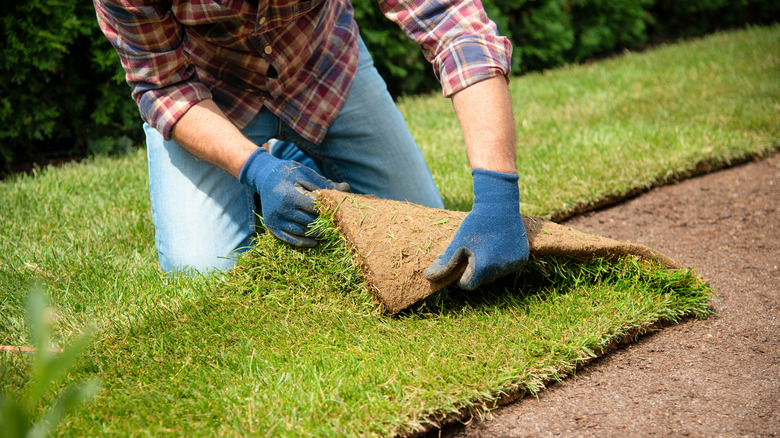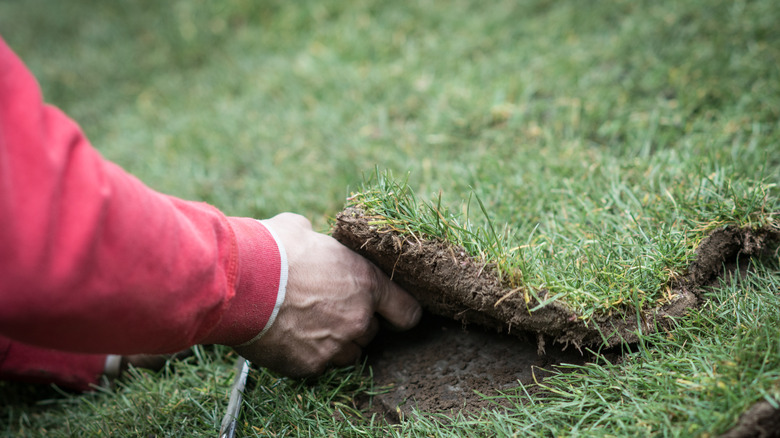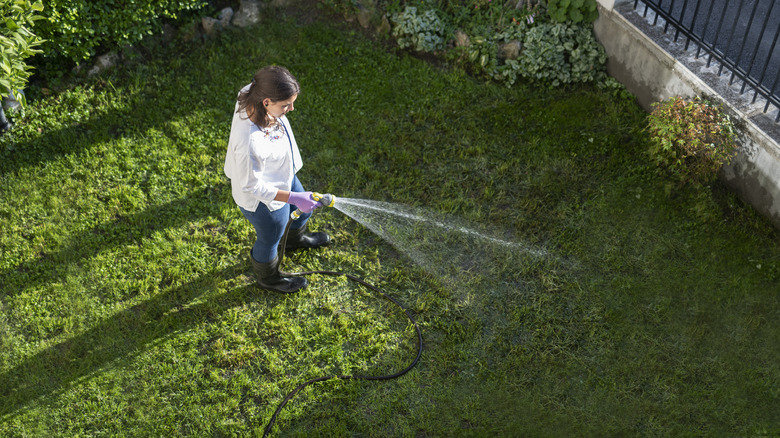Signs Your Sod Isn't Taking Root (And How To Save It Before It Dies)
So you've finally taken the plunge and updated your yard with new sod. Maybe you did so with the high hopes of boosting your curb appeal, or perhaps you just wanted to see a span of cheerful green grass every time you walked up the driveway. Gone will be the days of trying to bring bald or yellow patches back to life. Or so you think. Sod can sometimes be finicky, and if it doesn't get all of its needs met, it can begin to die. It won't root; instead, you will be left with the same struggling grass you started with. But how do you know your sod isn't rooting? One obvious sign is that it begins to change color. Another is that you can pull it back up like a rug.
Both are clear indicators that the roots haven't been established into the ground and that the sod isn't taking. However, you don't need to panic. Struggling sod can survive for about six weeks, giving you enough of a window to change its conditions and bring it back from the brink. Here is what to look out for and how to fix it before it's too late.
Signs to look out for
The first sign that your sod isn't rooting is if it begins to turn brown. It can be turning color for two reasons, and it's one of the biggest lawn care mistakes you can make: You're either under or overwatering it. Sod needs a lot of water to establish itself, so you might not be saturating it enough. Lawncare experts recommend thoroughly watering your lawn about 30 minutes after installation and then watering the new sod twice a day after that until it takes root. This can take several weeks, so be prepared to feel like you're constantly watering it. Conversely, brown grass can also be a symptom of overwatering. While the sod needs deep, healthy drinks of water, you want to ensure you're not watering it so much that you see puddles. Standing water can lead to root rot, killing the young roots.
The second sign that your sod isn't establishing is that you can easily peel it back from the dirt. If the roots are beginning to grow, they will reach deep into the soil, hooking the sod to the ground. Because of this, it will be difficult to lift the mat of grass. But if you can easily lift a corner, then you know the roots haven't established themselves, and the sod is struggling. Luckily, you can easily turn this situation around.
How to save sod before it dies
Whether your sod is turning brown or easily lifts from the soil, you'll want to alter your watering routine to save it. You either need to water more to establish the roots or less to avoid creating disease. Only water it in the morning and never during the evening. That's because the sun won't be able to help the water evaporate, leaving it to pool in the grass. However, you want it to stay consistently moist, especially during the first two weeks. Avoid watering it shallowly, and ensure it saturates a few inches underground. As the water dries, the roots stretch deeper into the dirt to access the remaining moisture, helping them establish.
It can also be struggling because there are too many air bubbles underneath. If there are, the roots can't connect with the dirt, so they can't access any water or nutrients. To fix that, pull the sod back and fill that area with more soil. Press it firmly down to the earth to ensure there are no air bubbles. Water it deeply, and new roots should begin to grow. The opposite can also be true where the soil is compacted. Because of this, the water has difficulty soaking in, leaving the roots dry and brittle. To fix the issue, roll the sod back, poke holes into the soil with a wooden dowel, and roll the grass back, pressing it firmly into the ground. Water it deeply and monitor it.


